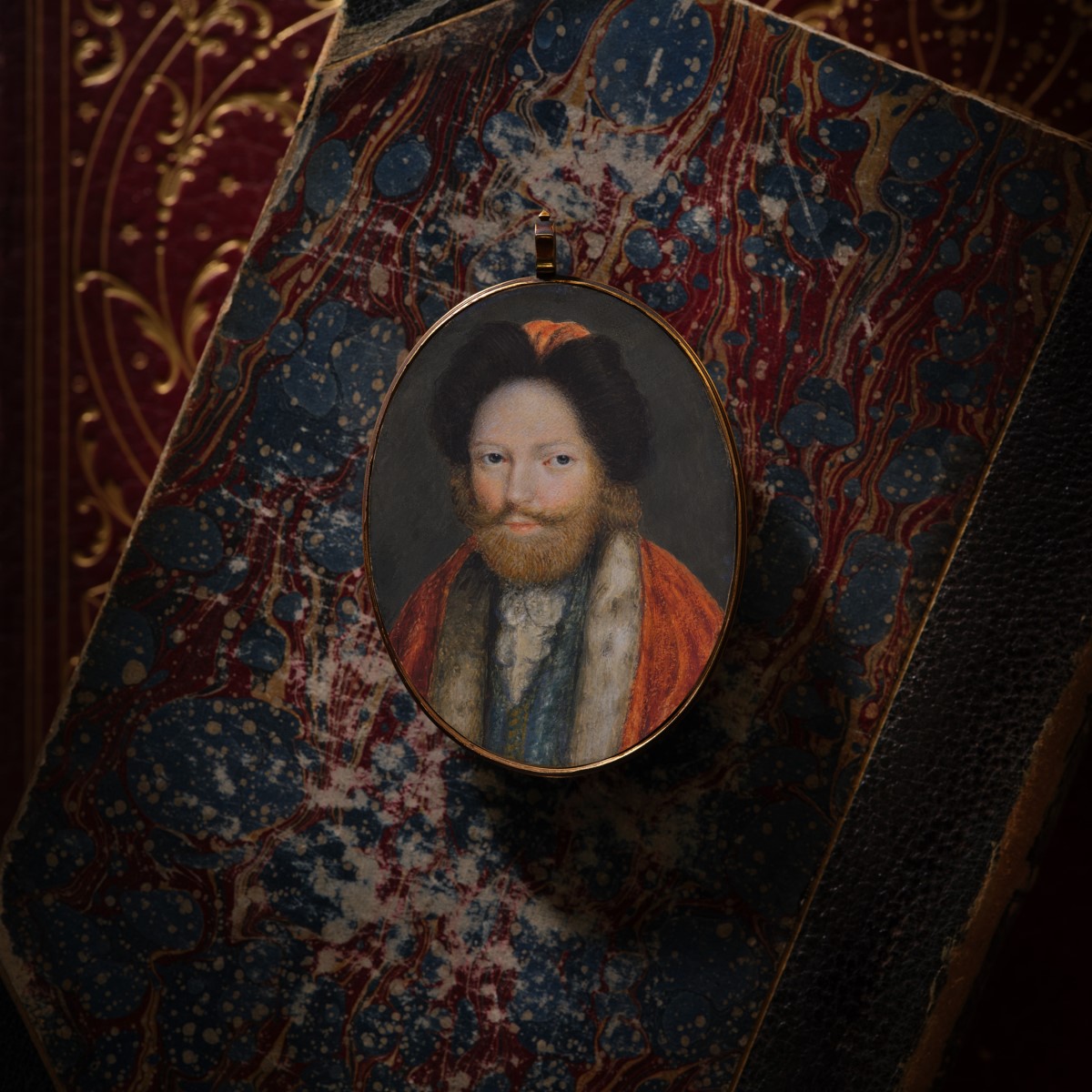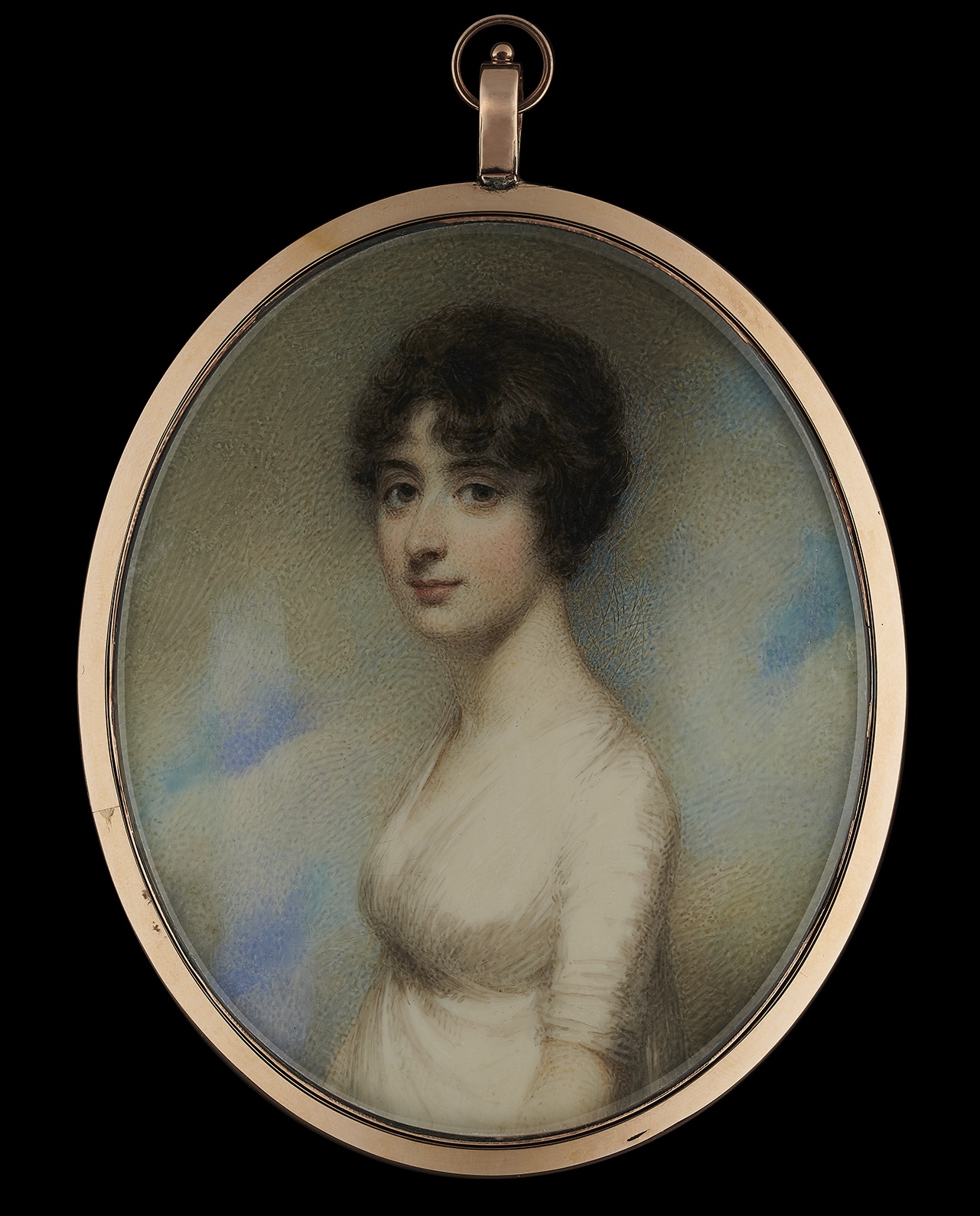By Emma Rutherford |
19 Feb 2025
Celebrating Austen: Two Miniature Discoveries Connected to Jane Austen
 'Miss Austen', the BBC2 series released earlier this month, coincides with the 250th anniversary of Austen's birth.
'Miss Austen', the BBC2 series released earlier this month, coincides with the 250th anniversary of Austen's birth. When the Limner Company launched in 2023, we did so with a very special item of stock – a portrait of James Brydges, 8th Baron Chandos, Turkish Ambassador 1681-84 [fig.1], explored in one of our first blog posts ‘Strange Connections: The Ambassador of Constantinople, Jane Austen and toasted cheese’. This blog explored the connection between Cassandra Leigh, Jane Austen’s mother and the Brydges family. This connection ultimately led to Jane’s closest brush with marriage – to Brook Edward Bridges, who likely proposed in late summer of 1805.

In 2020, when Emma was consulting for Philip Mould & Co., she discovered that a pretty, but fairly ordinary, portrait miniature by William Wood was of Mary Pearson [fig. 2], who was briefly engaged to Jane’s brother Henry Thomas Austen (1771-1850). Jane’s encounter with the unfortunate Mary was recorded in her candid remarks to her sister Cassandra, where she warned her to ‘be careful not to expect too much Beauty’ in a letter of 1786. In fact, Jane also noted that Mary’s picture, more than likely a miniature, ‘is of no great resemblance’, citing the age old issue of flattery over a good likeness in a portrait. Poor Mary’s appearance was further scrutinised by the woman who was to take her place as Henry’s paramour – Eliza Hancock – who described her as 'a pretty wicked looking girl, with bright black eyes which pierce through and through'.
 Figure 2. Portrait miniature of Mary Pearson, c.1798, William Wood (1769-1810) - Jane Austen's House Museum.
Figure 2. Portrait miniature of Mary Pearson, c.1798, William Wood (1769-1810) - Jane Austen's House Museum.When the press were told of the discovery, they focused on the influence that Mary Pearson had likely had on a character in the novel that Jane was writing at the time – Pride and Prejudice. Jane’s brother had met Mary Pearson while his regiment was camped with that of her father, naval officer Sir Richard Pearson. She was likely the inspiration for Lydia Bennet - the officer-obsessed teenager who eloped with the notorious Mr Wickham in the novel.
Jane’s relationship with Mary Pearson was cut short by Henry’s unexpected breaking of their engagement – suddenly, this woman who was going to be a sister-in-law, was set adrift. Henry’s affection had always been for his exotic cousin, Eliza Hancock, who had married Jean-Francois Capot de Feuillide in 1781. When her husband was killed in France, she returned to England and Jane’s eldest broher James proposed to her. She refused, but eventually accepted Henry’s offer of marriage and the couple were married in 1797.
There is no record of how Mary felt after her engagement to Henry was broken, but the short time that Jane knew her clearly made an impression. It is tempting to see this as an unattractive side to Jane’s character – her judgment of Mary’s looks seems particularly unkind. However, Jane continued to stay in touch with Mary up until 1799, around the time that she was painted in this miniature by Wood. However, the shameful end to the engagement left a lasting embarassment for the Austen family. In 1807, when Mary was living with her sisters in Southampton, Jane described their home as ‘the only Family in the place we cannot visit’. Mary eventually married in 1815, the same year that the novel Emma was published and two years before Jane’s death in 1817.
The miniature now resides at Jane’s home, now a museum, at Chawton in Hampshire. Jane’s pleasure at moving into this small house was expressed in a letter to her brother, Frank, in 1809;
Already in it, to our mind,
And how convinced that when complete,
It will all other Houses beat.







